Multi-angle Analysis of Northwest University Film Master’s Debate on Liu Qing

On May 21st, 2021, a biographical inspirational film was released nationwide. Students of the Master of Film Studies in 2020 watched the film "Liu Qing" collectively, and made a brief analysis of the film from many angles.
Liu Qing: the integration of film images into the course of characters and the changes of the times
As an essential element in movies, movie images are usually used as narrative props or emotional props to show some metaphors and profound meanings, which has become a crucial link between the movie itself and the audience’s aesthetics. In the movie "Willow Blue", the rolling Qinling Mountains appeared many times with a standing image, which became an important spiritual image in the film. For Guanzhong people, Qinling Mountain nourishes the land of Guanzhong Plain and is a symbol of profundity and massiness. In the film, Liu Qing stands in the scene of her residence, and the prospect is always accompanied by the towering Qinling Mountains, which means that Liu Qing’s indomitable will is just like the Qinling Mountains. After the baptism of time, she is still in Do not forget your initiative mind. Although her back is bent by life, she can’t erase her inner persistence. The relationship between Qinling Mountains and Guanzhong Plain, like that between Liu Qing and Huangpu Village, is mutually nourishing and symbiotic. The villagers in Huangpu Village provided materials and nutrients for Liu Qing’s creation, which promoted the publication of the book "The History of Entrepreneurship". While Liu Qing went deep into life, she also promoted the development of cooperatives and electrified Huangpu Village with the payment of manuscripts, which really benefited the people.
In addition, the cornfield is also an important image in the film. Farmers’ lives are inseparable from land, and the display of land is closely related to historical changes. After entering the 1960s, when the cooperative was in full swing, Liu Qing led the villagers to work in the afternoon cornfield. The director used high saturation tones and a large number of close-ups to highlight the people’s unprecedented enthusiasm for work and the excellent quality of hard work in a specific era. With the wheel of history rolling forward, the promotion of the "Great Leap Forward" policy has prompted the whole country to set off a large-scale steel smelting movement, but the land on which villagers depend for survival has been neglected. The director used the panoramic lens of a big overhead shot to show the scene that Liu Qing called on everyone to take the rain to collect grain in the cornfield in the middle of the night. The two plots displayed in the image of cornfield brought strong emotional shock to the audience on the one hand, and reflected the historical stage of the coming storm on the other. In the end, Liu Qing left Huangpu Village and returned to Xi ‘an City. The two images of wheat field and Qinling Mountain also became the mirage of the times and disappeared in Liu Qing’s life, but they brought Liu Qing and the audience a deep and clear touch.
(author:Chen Jiaying,Angle of cut: "image")
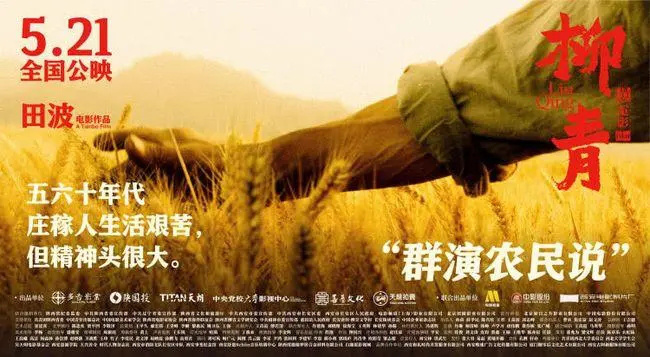
On the Portrait Shaping in the Movie Willow Blue
The film Liu Qing is a biography for people’s writers, and it also breaks through the superficial creation of most biographies. The film not only depicts Liu Qing, but also depicts his wife Ma Wei and farmer Wang Jiabin. These characters together reflect the real times with real life, restore the idealistic atmosphere and rural scene of that era, and let the audience cross just visiting and go back to the past.
"If you want to write, you must live first. If you want to shape a hero, you must first shape yourself. " This is Liu Qing’s requirement for his works and his own life. Liu Qing gave up Beijing’s excellent conditions and took root in Huangfu Village to create. At the beginning, there were many difficulties. The villagers laughed at his suit and tie. He burned his previous works, cut off his hair, changed his suit, moved to Zhonggong Temple, and began to really integrate into the countryside and farmers’ lives. In the process of writing the History of Entrepreneurship, Liu Qing not only created a hero, but also created herself in the cruelest way. She wrote with her life, made people cry, made the writer’s soul touching.
Liu Qing’s wife, Ma Wei, is not simply serving the male female role in the film. She is thoughtful, knowledgeable and independent, and is the image that supports the whole family. When Ma Wei learned that his classmates had achieved something, he had a psychological conflict, had an argument with Liu Qing, and left Huangfu Village with three children. These delicate emotions are human nature, so it can be seen that the director is not trying to create a "fake" character, but to grasp the inner feelings of the character more clearly through the lens and stories, and to create a richer and more tangible ordinary person. Wang Jiabin and Dong Binghan, as representatives of the masses, are also truly portrayed in the movies.
These characters have jointly completed this great work, and at the same time jointly created a more realistic and typical literary image with new actions and responsibilities.
(author:Guo yuke,The breakthrough point: "group image shaping")
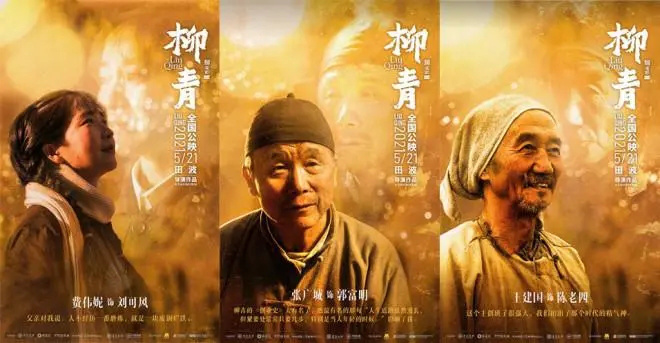
Women’s Modeling in Male Groups— — On the Image-building of "Ma Wei" in the movie Liu Qing
In the movie "Willow Blue", the geographical space and events presented by it are mainly male. But what is commendable is the director’s exquisite portrayal of the female image of Ma Wei. The director didn’t just regard the female image of Ma Wei as a prop to highlight the protagonist Liu Qing, but added a plot against men to Ma Wei, that is, resistance against the unconscious patriarchal thought represented by Liu Qing, which also brought the film into a gender topic. Ma Wei, a young and progressive female college student, gave up her superior urban life and came to the countryside for Liu Qing. At this time, she has not realized the contradiction between her and rural life. In the life year after year, the original vitality and talent of the horse are obscured. And the students who started from the same place as themselves have made small achievements. The only reply I got when I told my husband was: "I think it’s good to live here." This became the last thrust that provoked the horse to run away. As a result, she launched an incomplete "Nora-style run away". This plot provides the possibility of women’s counterattack, which gives Ma Wei a main position in narrative.
Although Ma Wei finally returned to her family, at this time she has broken the mirror image relationship with the world and realized her own growth. The combination of Ma Wei and Liu Qing, for the first time, is more due to Ma Wei’s worship of Liu Qing, which is a misunderstanding caused by mirror image. The second choice after returning is reconfirmed after the real cognition of the subject.
Generally speaking, the image of Ma Wei is a finishing touch in the film. The director’s efforts to her have shaped the image of Liu Qing completely, and also created a progressive female image that is full of flesh and blood and full of appeal, hovering between tradition and modernity. At the same time, it also gives a feminine color to the patriarchal social background and makes up for the vacancy of women’s right to speak in the film and television power.
(author:Li Jiangnan,Breakthrough point: "female image-building")
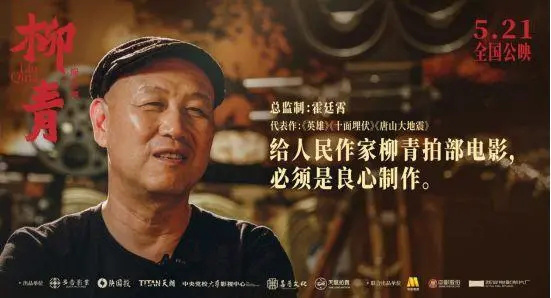
Authenticity of characterization
The film "Liu Qing" is a biographical film based on Liu Qing, a famous contemporary writer. The film truly reproduces the rural life in Huangpu Village, Shaanxi Province under the background of the national reform movement in the 1950s and 1960s. It can be said that the film is not only a true reproduction of Liu Qing’s creation and life, but also a vivid reproduction of the creation process of "The History of Entrepreneurship".
The objective and true representation of characters can be said to be the criterion of biographical films, and the theme of biographies means objective re-enactment, but it is difficult to truly re-enact characters in film creation. After many field trips and extensive collection of Liu Qing’s life story and historical background, the director of the film "Liu Qing" completed this filming, which first ensured the historical thickness of the character’s background. Secondly, when the film reproduces Liu Qing’s life, it accurately grasps the details of life, and truly reproduces the complexity of Liu Qing’s character from the grasp of details, making Liu Qing’s character more objective and real. For example, Liu Qing’s clothes are extremely simple, which is because Liu Qing is a person who goes deep into the grassroots and cares about people’s lives. His clothes reflect his quality and character. Finally, in addition to the main character Liu Qing, the film also depicts a large number of farmers around Liu Qing. In shaping the group images, it also grasps the complexity and versatility of the characters, and the farmers’ characters and lives are faithfully reproduced.
The film strives to objectively reproduce the main characters and other group images, and tries its best to complete the filming of this biographical film in shaping the characters.
(author:Li Xiaodong,The breakthrough point: "the authenticity of characterization")

On the Narrative Design of Writers’ Films Based on the Film Willow Blue
Writers’ movies are a theme that is not often put on the big screen, because first of all, writers have two narrative main lines that can be presented. One of these two narrative lines is based on the writer’s growing and changing life course in history, and the other is based on the world view of values from the first perspective presented in his works. These two narrative lines can make us appreciate the writer’s life. However, it is obviously necessary to keep trying and thinking about how to handle these two narrative lines well and achieve harmony in the works. After watching the movie "Willow Blue", how can I make these two narrative lines reach a harmony? In fact, the most important way is to reflect each other. In the film, Liu Qing’s stories in the history of entrepreneurship and the rural production changes reflected in real life reflect each other. At the same time, his works also reflect Liu Qing’s understanding of this society and this era and his thinking about life.
Through the mutual blending and reflection of the two narrative main lines, a more successful presentation can be achieved: not losing "people" "People" is the most important part of the whole writer film. On the other hand, the film Liu Qing is presented in the narrative subject of "people", and the "people" here also have the "unity of family and country" in China traditional culture. In the shaping of Liu Qing as a "person", the personal virtue of self-cultivation is also the public morality of governing the country and the world. Therefore, when criticized, Liu Qing still insists on her own path, seeking truth from facts and serving the country as her home.
It is through the shaping and presentation of "human" that the effect of "truth" can be achieved. And the "truth" here can also be called: love truth, meaning truth and history truth. Through the presentation of life course and the development line, the characters are created in the design. In the movie "Liu Qing", Liu Qing finally grew into a "general person" in the era of constant reversal and transformation, a person without alienation. His body is full of the brilliance of human nature and deep and sincere feelings for a land.
(author:Niu Siyi,The breakthrough point: "the narrative design of writers’ films")
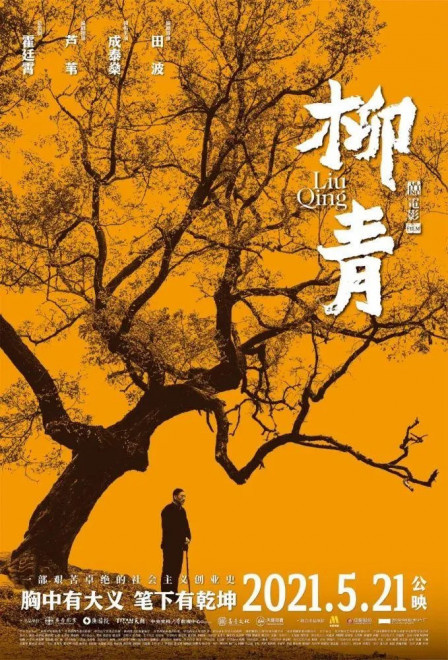
The most infectious realism
The film Liu Qing is a biographical film with touching realism. Its realistic performance is from macro to micro, from the outside to the inside, thus infecting the audience.
First of all, the realism of the film Liu Qing is manifested in the most basic scene props and formal arrangements. The director restored the environment and features of the 1950s and 1970s to the greatest extent through real-life construction, peasant actors and dialect narration, and showed many real scenes, such as doing farm work and setting up a mutual aid society, which carried the development of the whole story.
Secondly, as the soul and pillar of the whole film, Liu Qing’s characters have distinct realistic characteristics. Liu Qing’s identity in the film is composed of three kinds of writers, government officials and farmers. Complex identity was wrapped in the tortuous but still creeping trend of the times. With the development of the plot, Liu Qing’s three identities are pulling each other to make them occupy different proportions. We can’t even tell when Liu Qing "took off" the official’s coat and put on the peasant’s coarse shirt. It is this tiny realistic detail that makes up the most plain and shocking Liu Qing.
Finally, realism is the theme that haunts the whole novel Liu Qing. Liu Qing has such a line in the film — — Life is a writer’s big school, and the director holds this view, and the whole film carries out this theme, which fits the historical prototype to the greatest extent. And realism is not the director’s vague macro propaganda, but it is really implemented in every detail of the film, which makes realism radiate the most touching brilliance and become the general tone of the whole film.
Undeniably, it is difficult to tell every short story and shape the characters in a down-to-earth way with the majestic epic temperament, but Willow Blue reflects the environment and development of the whole era through micro-reflection, and its completion is very high. The audience will feel that the film flows like water, and realism is the spirit that gradually penetrates into the texture of the film and makes the whole film glow.
(author:Qin Yiran,The breakthrough point: "realism")

Appreciation of the Plays of Liu Qing
"With an open mind, the Wan Ren Mountain will be more ambitious. I have a thousand years of work and a plain heart. " — Liu Qing
Who is Liu Qing? Perhaps for some young people, he is a writer who has gradually disappeared in the long river of history. The spirit of Liu Qingzhi, the style of his writing, is passed down from one person to another. His spirit and character will never fade.
The film Liu Qing shows the audience Liu Qing’s persistent life. He has attached multiple labels all his life. He is a cultivator of the national literature and art cause, a people’s writer with Gan Kun in his works, and a willing ox among the people on the loess. At the beginning of the film, Liu Qing’s passion for literature and art was presented to us. As a writer, he was brilliant, but he knew how his hands could be too far away from the fertile soil of creation, so he was determined to walk towards the world he wrote. In the 1950s and 1960s, the new China was in ruins, and the vigorous socialist rural cooperative movement began. In response to the call of the times, he left Beijing and embarked on a journey to Huangfu Village in Chang ‘an. If you want to write, you should live first. If you want to create heroes, you should create yourself first. He shaved off his hair, put on a busy farmer’s sweatshirt, held a hookah in his hand, hung out with the villagers at the entrance of the field, participated in their labor, and laughed and laughed under the big tree, just like a busy farmer in Guanzhong.
Through linear narrative, the film depicts in detail Liu Qing’s life as a writer, as a life, as an ideal, as well as the people’s life. It is like slowly unfolding every node in Liu Qing’s life, and the audience is happy with his joy and sad with his sorrow. The construction of contradictions and conflicts in the film pays more attention to pen and ink, while others pay less attention to depiction. The details are handled properly and the emotions are properly handled. For example, Liu Qing and his wife Ma Wei are divided on the choice of life, and the description of separation is very light. One term’s emotions flow, and then, in the face of his wife’s sudden death, it is a description of heavy colors, and the emotions accumulate until they erupt, turning into a silent cry on a rainy night. Mayflies, I miss the insignificance of the individual, but I am passionate about my feelings, and my grief is like the dumping of mountains and seas. Liu Qing personally feels that the world is troubled in the wind and rain, and when she is obedient, she is clumsy. The spark in my heart has not been extinguished, and I am still willing to be the mouthpiece of the people in the last journey of my life.
What is greatness of Liu Qing? It is just a mere flesh, and he has consciousness and thinking as an individual life on the road of life. He is not empty talk about the faith in his heart, and his heart is at his feet. He has pain and struggle as an individual life, and he also has sparkling persistence. There are thousands of floating life, nice to meet Liu Qing!
(author:Ren Wenrui, starting point: "Appreciation of Plays")
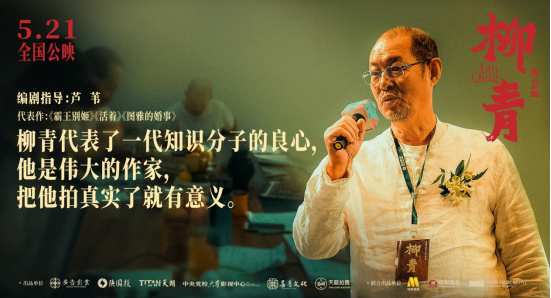
Liu Qing’s three transformations
"Liu Qing" is a special film about writers. The film portrays Liu Qing’s characters through three changes, and shows the changes of his mental process in the creative process.
Under the wave of socialist agricultural cooperative movement in rural areas, Liu Qing would rather be demoted than go to the countryside to write a book. However, after returning from studying abroad, he has never been able to integrate into the lives of the people, nor can he write articles that satisfy him. In the process of setting up a mutual aid group for farmers, he bid farewell to his past writing by burning manuscripts, cutting off his head and wearing a cloth shirt, and turned into a peasant image with a heavy earthy atmosphere. When the cooperative encountered difficulties and the pressure from the superiors, his wife Ma Wei left the countryside and returned to live in Xi ‘an. The triple blow made Liu Qing encounter a new writing crisis, which hindered Liu Qing’s progress. He rode alone in the snowy wheat fields in winter, and the farmers rescued him from the predicament, which prompted him to decide to write the real life of farmers into novels, portray the real and sensible image of farmers, and opened Liu Qing’s ideological road change. Time has passed. When Liu Qing was investigated, his wife Ma Wei, who accompanied him to grow up together, died unfortunately. Infinite grief swept through his heart. He hobbled into the heavy rain, and the pace was slow and heavy. After the review results came out, Liu Qing ushered in liberation. He returned to Huangfu Village, where he lived with the people for decades, and looked at the mountains and rivers in Qinling Mountains in front of the ruined temple, ushered in a spiritual change of self-release.
From changing the external image to being close to the people, and then to the ideological transformation of inner growth, Liu Qing went through hardships with the people on the road of socialist development, and sought self-improvement in the hardships, and wrote a magnificent chapter in China’s social development with a fearless personal entrepreneurial history.
(Author: Xie Yuting,The breakthrough point: "Liu Qing’s three transformations."”)
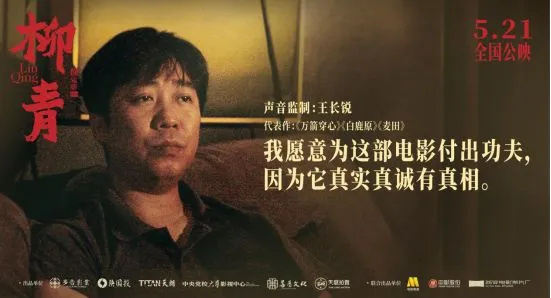
Liu Qing: A Biography of People’s Writers with Epic verve
The film "Liu Qing" takes the true story of Liu Qing’s creation of "The History of Entrepreneurship" as a clue, tells the mental journey of Liu Qing’s writing "The History of Entrepreneurship", implicates the historical features in the process of socialist transformation in rural areas of China with Liu Qing’s personal life experience, deeply reveals Liu Qing’s personality charm, and conveys the historical depth in the great era in group characterization, which has a strong epic quality.
First of all, the film takes Liu Qing’s creative experience of "The History of Entrepreneurship" as a time clue, and the time has passed for decades. The film space is from Huangfu Village to Xi ‘an City, reflecting the changes of the times with the ups and downs of the characters’ fate, and embodying its epic aesthetic pursuit with successful narrative strategies. Liu Qing insists on the creative concept of "going deep into life and taking root in the people", bringing out the great changes that took place in Huangfu Village in the early days of the founding of the People’s Republic with the writing process of "The History of Entrepreneurship", and truly restoring the history through events such as buying rice seeds in Wang Jiabin and grabbing corn in rainy nights, which has a rough and tender feeling of rural changes. Secondly, the film breaks through the construction of a single character image in biographical films, and other characters, such as Ma Wei, Wang Jiabin and Dong Binghan, are equally remarkable. The combination of character creation and film narration realizes the unity of individuality and generality in the group-like character creation. Wang Jiabin, Dong Binghan, Wang Sanhan, Lao Guo and other peasant images are the representatives of countless peasants in China. On the one hand, they show the hardworking and practical character of peasants in northern Shaanxi, on the other hand, they also have the character defect of being closed and conservative. The creation of group portraits shows the complex texture of life itself and the rural environment in the early days of the founding of the People’s Republic of China, showing the epic quality of the film.
(Author: Zhang Xingyi,Breakthrough point: "epic verve")

Historical Truth in the Movie Willow Blue
Historical truth in biographical films is to emphasize the objective stance and attitude of writers, directors and other creators, and to complete the artistic integration before authenticity and hypothesis.
As a film with the special history after the founding of New China as the story background, the film "Liu Qing" did not mechanically restore the appearance of history. On the basis of not violating the principle of truth, the director handled the specific story details flexibly, and interpreted his understanding of Liu Qing as a living character and his story "essential truth" between the virtual and the real.
The famous screenwriter teacher stressed many times when he was the screenwriter director of Liu Qing: "Biographies of artists are very difficult to write, especially writers in special historical periods." When dealing with the background of Liu Qing’s story in the film to promote the narrative progress, the script has been grinded for nearly two years and revised again and again. When dealing with the Cultural Revolution, Director Tian Bo adopted a completely different historical perspective, that is, weakening the significance of the political and historical dimension to restore the historical figures in China. Through a profound description of the psychological state, mental outlook and inner activities of the figures in the historical situation, the characters’ indomitable character quality was expressed, which made Liu Qing’s characters full of humanistic feelings. Finally, the unity of character truth and historical truth was completed, which was touching.
(author:Zhang Zhenlin, breakthrough point: "Biographical film and historical truth")

The Application of Light in Liu Qing
Light is an important creative tool in movies and even all visual arts. Film creation will be influenced by light under natural conditions; Creators will also use various means to change natural light to achieve their creative goals. Light not only provides illumination for all kinds of things on the screen, but more importantly, it provides different angles for the audience to see and understand things on the screen, and it also has different influences.
The opening of the film laid an overall tone for the whole film to run out of light. High brightness, high saturation and high-profile use of light, golden wheat fields and towering Qinling Mountains under the sunshine render positive emotions and atmosphere. This external environment atmosphere actively cooperates with the simple image and heavy language of Liu Qing in the film, which directly sublimates the main body of the film, which is the use of natural light in the opening of the film.
The same film also makes full use of artificial light, especially in closed auditoriums and other places. In the pictures showing groups, artificial light is used to highlight the key points, which actively renders the image of the protagonist Liu Qing, matching the overall style of the film. At the same time, this kind of light is hierarchical and rhythmic, and it is not blindly pursuing the key points. Besides the main light source, there are artificial secondary light sources with distinct levels and strong sense of depth, so the use of this kind of light has its aesthetic pursuit. In terms of content, the use of light well matches the epic temperament of the film and the implied theme; Formally speaking, this use of light refers to the use of light in oil paintings, such as Dong Xiwen’s founding ceremony, Spring Arrives in Xizang, Millions of Heroes Crossing the River and other thematic paintings, in which the coordinated use of theme and light has a good inspiration for film creation, and the film has also practiced the use of this use of light in the main theme film and achieved good results.
(Author: Zhao Shengnan, the breakthrough point: "light application")